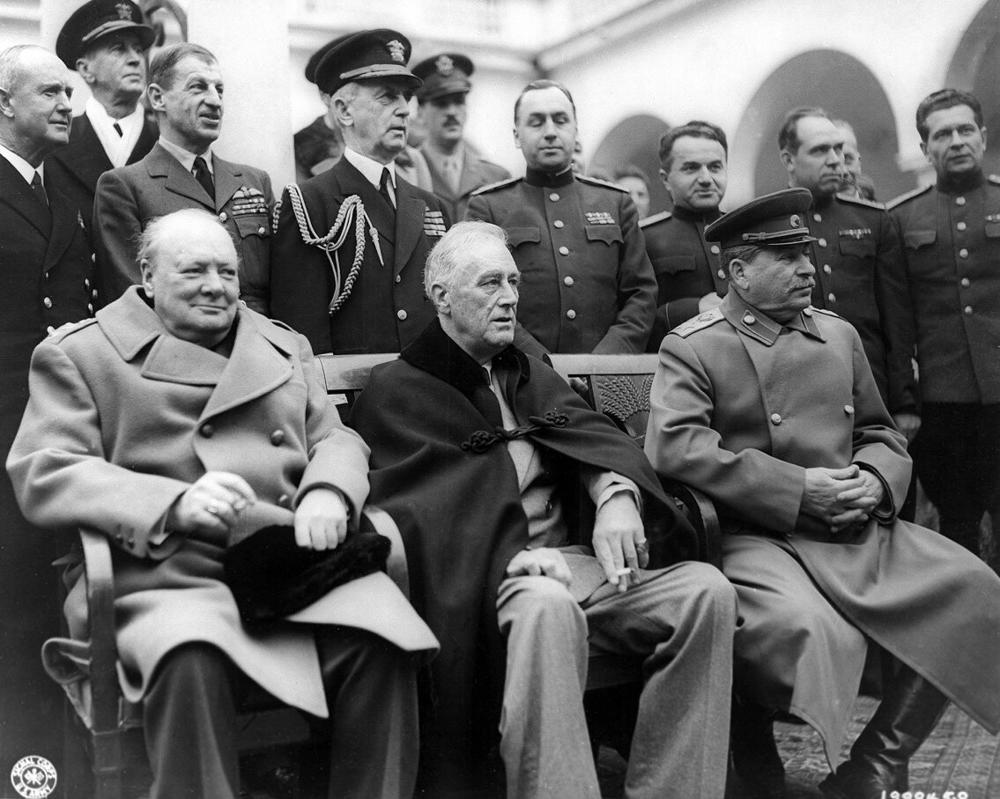Yalta 2.0
Eighty Years after the End of World War Two
In the spring of 2025, a bizarre exhibit opened in the city of Simferopol, located in Crimea, which had been annexed by Russia in violation of international law. At the center of the small show, entitled “Yalta 2.0” or “A New View of the Big Three,” is a triptych of three larger-than-life portraits. The central image shows Russian President Vladimir Putin, with US President Donald Trump to his left and Chinese President Xi Jinping to his right. A world map is positioned at their feet. This not-so-subtle arrangement is complemented by other exhibits, including a contemptuous caricature of Emmanuel Macron, Ursula von der Leyen, and Olaf Scholz. The message of the exhibition is clear: Big politics is made by big powers (and by “big men,” no less).
The image is a reminder of the Yalta Conference in February 1945, when Churchill, Roosevelt, and Stalin laid down the basic principles of the postwar European order and decided on the future of an entire continent. They defined spheres of influence and shifted borders. What the affected people in the countries of Eastern and Central Europe thought about this seemingly did not concern the “Big Three.”
The “Big Three” at the Yalta Conference, February 1945: Prime Minister Winston Churchill, President Franklin D. Roosevelt, and Marshal Joseph Stalin.
Image Credit: U.S. Signal Corps
From the Russian perspective, Yalta was and is considered to be a diplomatic masterpiece. Yet the conference signifies far more than a positive reference point in Russia’s political history. Indeed, it offers Putin and his entourage a model for a future division of the world according to their own taste.
The situation, however, is far different in Eastern and Central Europe. There, “Yalta” has always been synonymous with the concrete threat posed by thinking in terms of imperial spheres of influence. To give just one example: When the sixtieth anniversary of the end of World War II was commemorated in 2005, many cautionary voices in Poland and the Baltic states, for example, pointed out the consequences of the order negotiated at Yalta. In large parts of Eastern and Central Europe, the end of the Nazi reign of terror was followed by a Soviet-style dictatorship.
Perhaps a “Yalta 2.0,” as imagined by (and not only by) the initiators of the Simferopol exhibit, might be able to force a dictated peace in Ukraine. However, the price for this would be paid by those not at the negotiating table. It would mean a lack of freedom, including forms of oppression – and not only in seemingly distant Eastern Europe. Eighty years after the end of World War II, it is time for Germany to finally learn this lesson.
Robert Kindler is professor of Eastern and Central European history at the Institute for East European Studies, Freie Universität Berlin.Further Information
This article is part of the series ‘How do wars finally come to an end?’. You can read it here in German.


